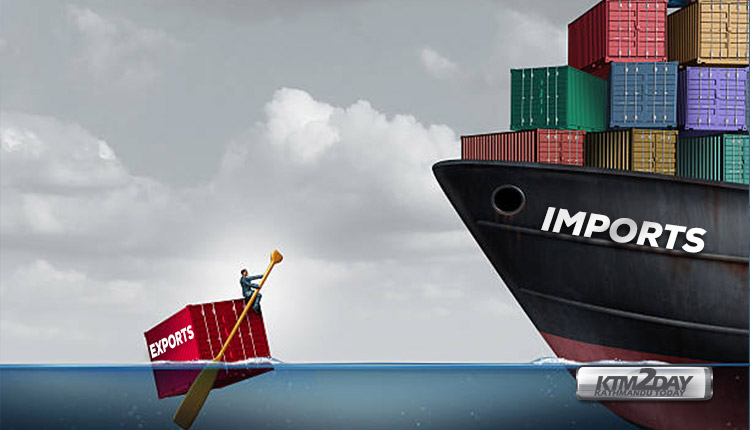Nepal’s Foreign Currency Reserve of $9.56 billion inadequate


A ballooning current account deficit due to increasing imports and weakening exports has taken a toll on Nepal’s vulnerable external sector with officials saying that the existing foreign currency reserves won’t be able to sustain imports for longer than eight months.
The current reserve of $9.56 billion will only be enough to finance imports of merchandise goods and services for 7.9 months even though Nepal Rastra Bank regulations require it to maintain a reserve enough for at least 8 months, according recent statistics released by the central bank.
As other sources of foreign currency like exports, tourism and foreign direct investment are not significant, Nepal has to rely largely on migrant workers’ remittance to strengthen its foreign exchange reserve. In the past, the country received adequate remittance to offset its massive trade deficit, but lately remittance inflows are unlikely to sustain imports despite growing at very healthy rate.
According to the country’s macroeconomic report of the first three month of the current fiscal year (mid-October 2018), worker remittance increased 37.3 percent year-on-year to Rs242.17 billion. However, the growth is not enough to offset the trade deficit which reached Rs349.84 billion during the review period, up 45.9 percent from before.
Economists say the overall picture looks worse than expected a few months ago. Import covers from foreign exchange reserves are fast declining, and if this situation persists for long, it will lead to inflationary pressure and the country’s overall output will suffer, slowing economic growth, according to economist Chandan Sapkota. “The central bank and the Finance Ministry must intervene to stabilise the situation,” he said. “If they don’t act soon, it will be difficult to manage the economy over the midterm.”
Central bank officials agreed that the country’s external sector was under pressure due to ever increasing imports, but denied that a macroeconomic crisis was looming. According to Nara Bahadur Thapa, executive director of the central bank, remittance itself is one of the major reasons behind the surge in imports.
“When people working in foreign countries send back their earnings, their family members back home will use the money for consumption, and this fuels imports,” said Thapa.

The aggressiveness shown by the banking industry to expand credit has been instrumental in increasing imports, according to Thapa. Credit disbursement to the private sector by banks and financial institutions swelled more than 25 percent in the first three months of this fiscal year compared to the same period last year. Since the credit is used to import industrial raw materials for production and manufactured goods for trading, it will boost the import volume. Similarly, ongoing reconstruction works are fueling imports as they require a large quantity of imported construction materials.
Thapa said the situation needed to be watched cautiously but not immediate intervention as this might derail the economy. “All imports are not bad as they are necessary to keep the economy moving,” he said. “We should let the economy function on its own till there are enough foreign exchange reserves to pay for imports of goods and services for six months.”
Sapkota said that it was high time the government acted to address the situation through stabilisation and structural measures. Stabilisation measures include removing key bottlenecks faced by industries producing export goods or goods that can help substitute imports. “For example, an adequate and reliable supply of electricity will help these industries to increase productivity,” said Sapkota.
In the long run, however, the authorities should address the situation through structural measures like policy reform that will attract foreign direct investment and increase industrial productivity to boost exports.















